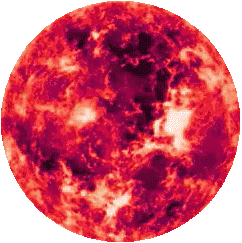
GJ 1002 Star System
The GJ 1002 Star System contains 1 Star and 2 Planets.
2 Planets are habitable planet candidates, planets GJ 1002 I and II
The GJ 1002 Star System is located within near the inner rim of the Orion Arm, within the Local Fluff of the Local Bubble, between the Radcliffe wave and Split linear structures (formerly Gould Belt) in the Milky Way Galaxy, which is 26,000 light years away from the massive Sagittarius black hole at the center of the Galaxy.
/ Star & Planets / Stars & Planets List 0 to 20 Light Years / GJ 1002 Star System
15.3130 Light Years Away from Earth
90.025 Trillion Miles
15.3130 Light Years
4.6949 Parsecs
GJ 1002

M5.5V Class Red Dwarf
5,015 F Photosphere
Moderate Flares
1 AU = 92,955,807 Miles
Main Sequence
2.8 Billion Years Old
Population I Star
Heavy Element Rich
Chemical Rocket Travel Time
153,130 Earth Years
Fission Rocket Travel Time
308.10 Earth Years
Fusion Rocket Travel Time
154.05 Earth Years
Laser Light Sail Travel Time
77.02 Earth Years
GJ 1002 Planets Probability to Host Life
GJ 1002 I (Sonkaris): The chances of life on GJ 1002 I are unknown but the planet is a promising candidate for further study because it has an Earth-like mass and orbits within its star's habitable zone, the region where liquid water could exist. However, its proximity to the red dwarf star GJ 1002 means it may be tidally locked and could be subject to powerful flares, which could strip its atmosphere or sterilize its surface. More research, potentially with telescopes like the future ANDES spectrograph, is needed to determine its atmospheric composition and true habitability.
GJ 1002 II (Exochin): The chances of life on GJ 1002 II are unknown but the planet is a promising candidate for further study just like GJ 1002 I, because it also orbits within its star's habitable zone, the region where liquid water could exist. However, its proximity to the red dwarf star GJ 1002 means it may be tidally locked as well and could be subject to powerful flares, which could strip its atmosphere or sterilize its surface.
It has also been theorized that the J-Rod alien, allegedly encountered by Daniel Burisch at the S4 complex in Area 51, might be from the GJ 1002 star system, since the system is about 15 light years away from Earth. However, according to his story, the J-Rod aliens initially identified themselves as being from the Zeta Reticuli star system, but Daniel Burisch later concluded that they were actually time-traveling descendants of humans.


While the planet GJ 1002 I and GJ 1002 II have good chances for supporting life, I am not so sure about the claim from Daniel Burisch that it is home to the Gray Aliens. We will need much more data to first confirm that these two planets are capable of supporting life, and then proof that Gray Aliens are actually inhabiting one or both of these planets.